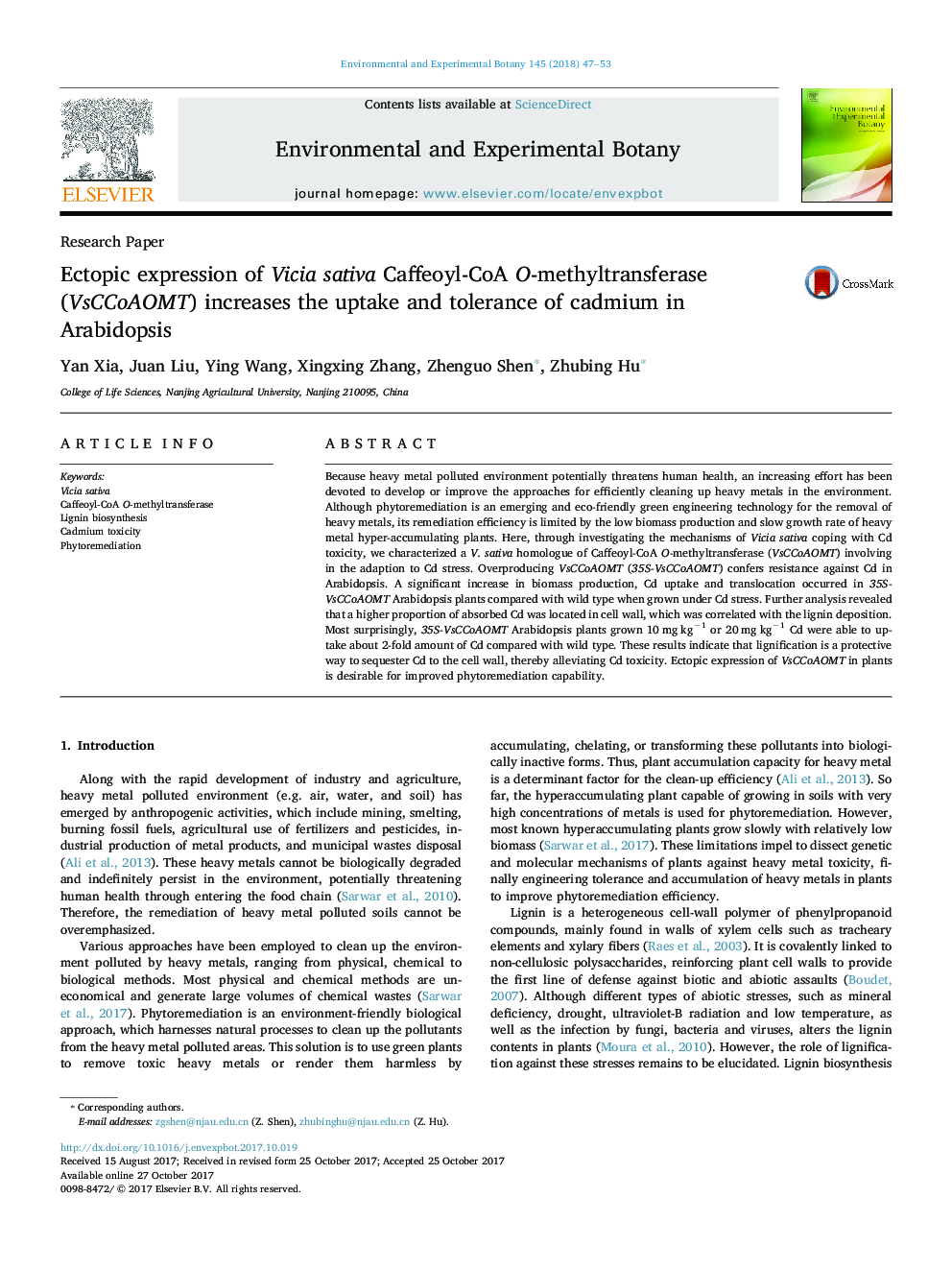| Article ID | Journal | Published Year | Pages | File Type |
|---|---|---|---|---|
| 8887147 | Environmental and Experimental Botany | 2018 | 7 Pages |
Abstract
Because heavy metal polluted environment potentially threatens human health, an increasing effort has been devoted to develop or improve the approaches for efficiently cleaning up heavy metals in the environment. Although phytoremediation is an emerging and eco-friendly green engineering technology for the removal of heavy metals, its remediation efficiency is limited by the low biomass production and slow growth rate of heavy metal hyper-accumulating plants. Here, through investigating the mechanisms of Vicia sativa coping with Cd toxicity, we characterized a V. sativa homologue of Caffeoyl-CoA O-methyltransferase (VsCCoAOMT) involving in the adaption to Cd stress. Overproducing VsCCoAOMT (35S-VsCCoAOMT) confers resistance against Cd in Arabidopsis. A significant increase in biomass production, Cd uptake and translocation occurred in 35S-VsCCoAOMT Arabidopsis plants compared with wild type when grown under Cd stress. Further analysis revealed that a higher proportion of absorbed Cd was located in cell wall, which was correlated with the lignin deposition. Most surprisingly, 35S-VsCCoAOMT Arabidopsis plants grown 10 mg kgâ1 or 20 mg kgâ1 Cd were able to uptake about 2-fold amount of Cd compared with wild type. These results indicate that lignification is a protective way to sequester Cd to the cell wall, thereby alleviating Cd toxicity. Ectopic expression of VsCCoAOMT in plants is desirable for improved phytoremediation capability.
Keywords
Related Topics
Life Sciences
Agricultural and Biological Sciences
Ecology, Evolution, Behavior and Systematics
Authors
Yan Xia, Juan Liu, Ying Wang, Xingxing Zhang, Zhenguo Shen, Zhubing Hu,
